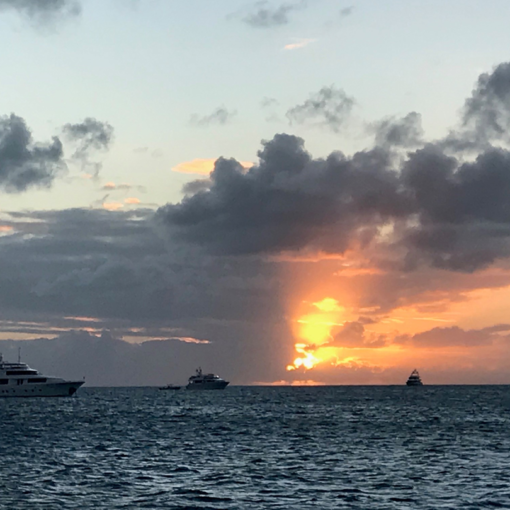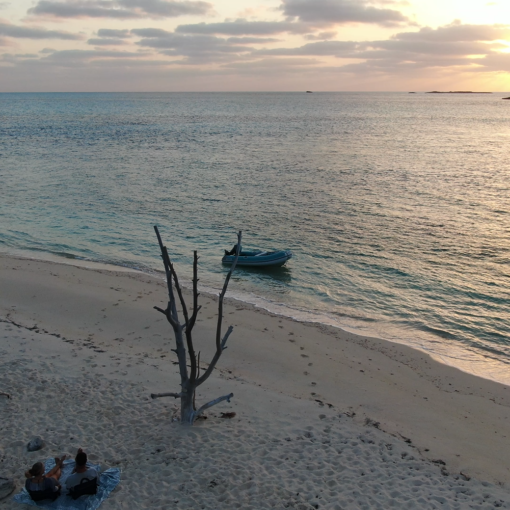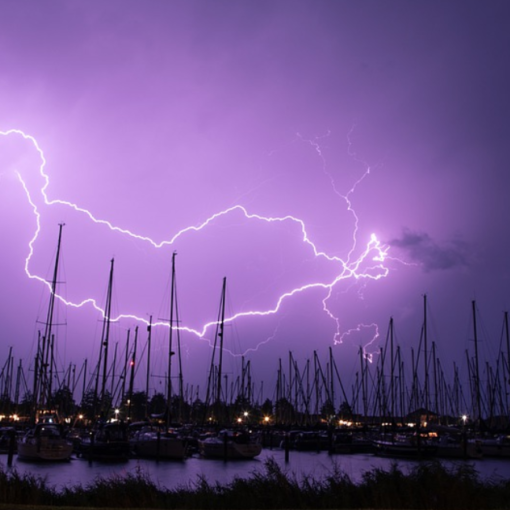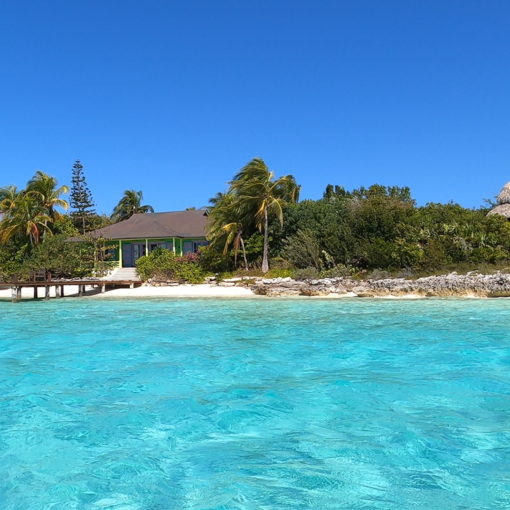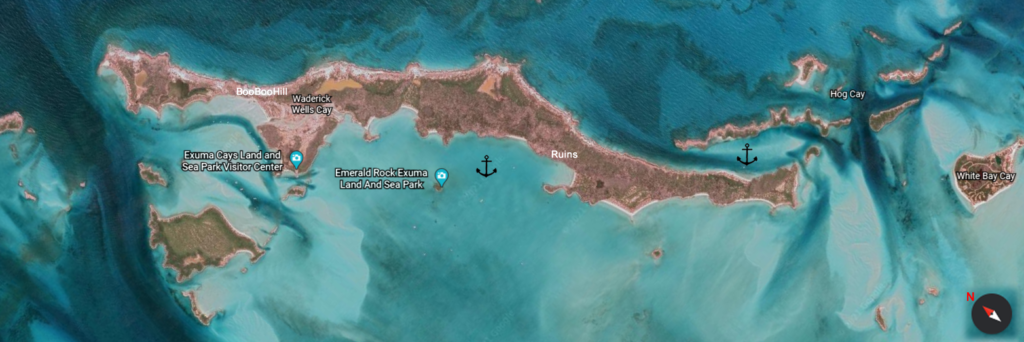
Warderick Wells Cay is home to the Exuma Land and Sea Park office. Its north mooring field is one of the most iconic overhead views in the entire Exuma chain, forming a narrow horseshoe of boats in a seemingly impassable shallow sandbar. We had long wanted to go there and get that perfect drone shot, but we had read cautionary reviews about the current and decided we didn’t need the photo op that badly. We instead went to the quiet solitude of the Emerald Rock Mooring field. It was the perfect choice.
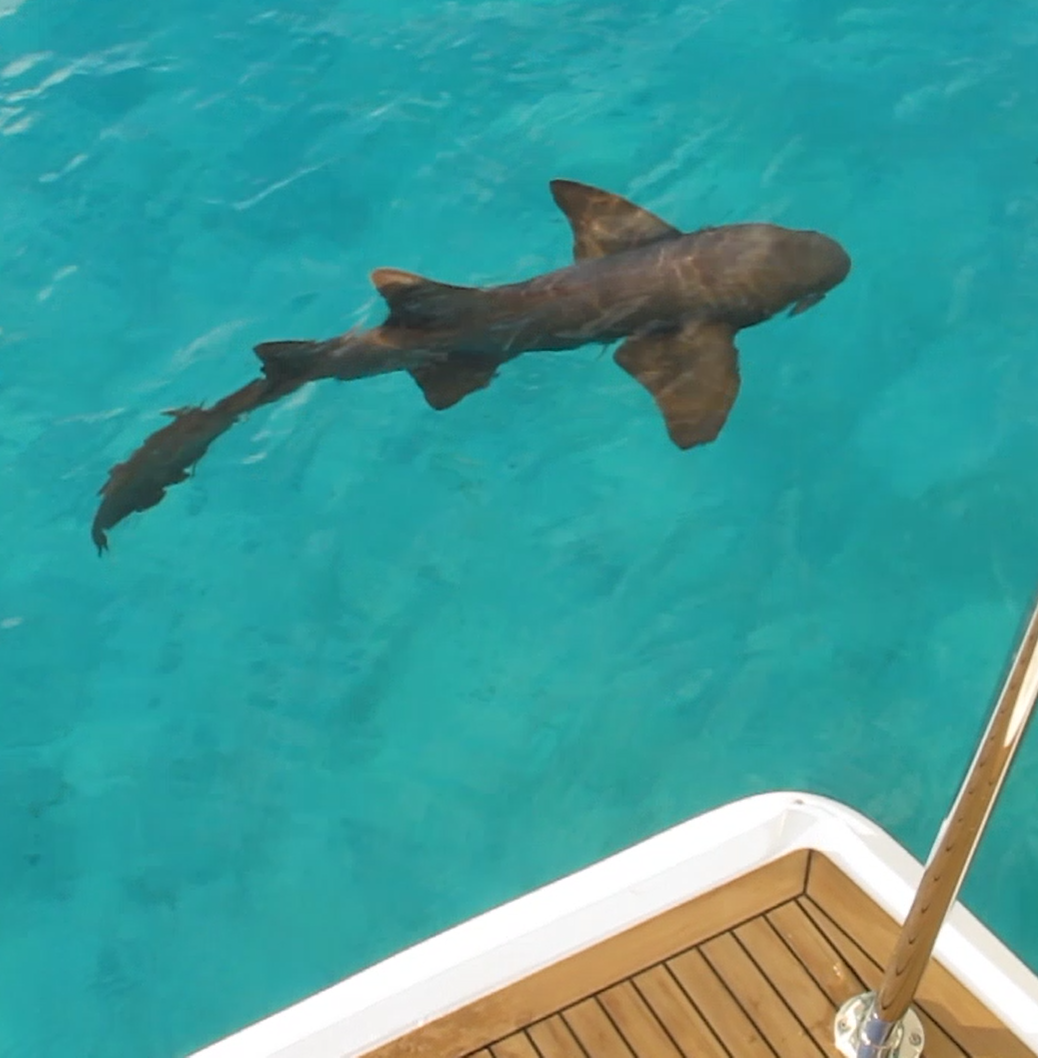
Emerald Rock Mooring
The Emerald Rock mooring field is very large, with approximately 20 mooring balls. We shared it with only two other boats in peaceful, no-current bliss. Immediately upon arrival, we were greeted by the nurse shark welcoming committee. Asrai didn’t know what to make of that!
The couple from one of the boats stopped by to say hello. In yet another small world experience, the woman had gone to the same Northern California high school as my children (Monte Vista). Amazing.
Poisonwood
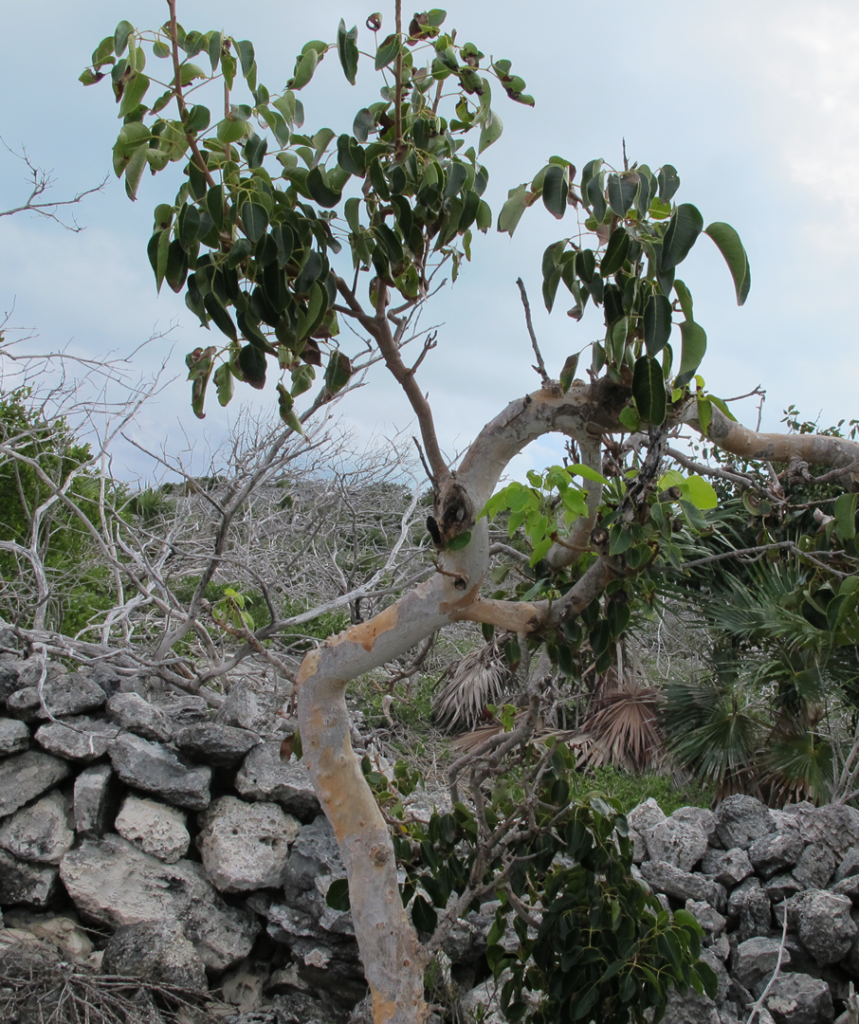
Poisonwood is a member of the cashew or sumac family and is a close relative to poison ivy and poison oak, with similar effects. It is a small tree with patches of yellow/orange bark. It is also everywhere on the southern end of Warderick Wells Cay.
Ruins
There were reportedly ruins near our beach, via a path leading south. We couldn’t resist and headed off. We found a long wall and a few other minor artifacts, but we were unable to find the main site, which we could see south in the distance. The map showed the path leading south past the ruins and to another beach, so we got back in the dinghy and headed for the next beach. It had a much better marked path leading back north.
Up the hill, we found the remains of several one room houses, somewhat similar to the ones on Hawksbill Cay but with more boulders in their construction.
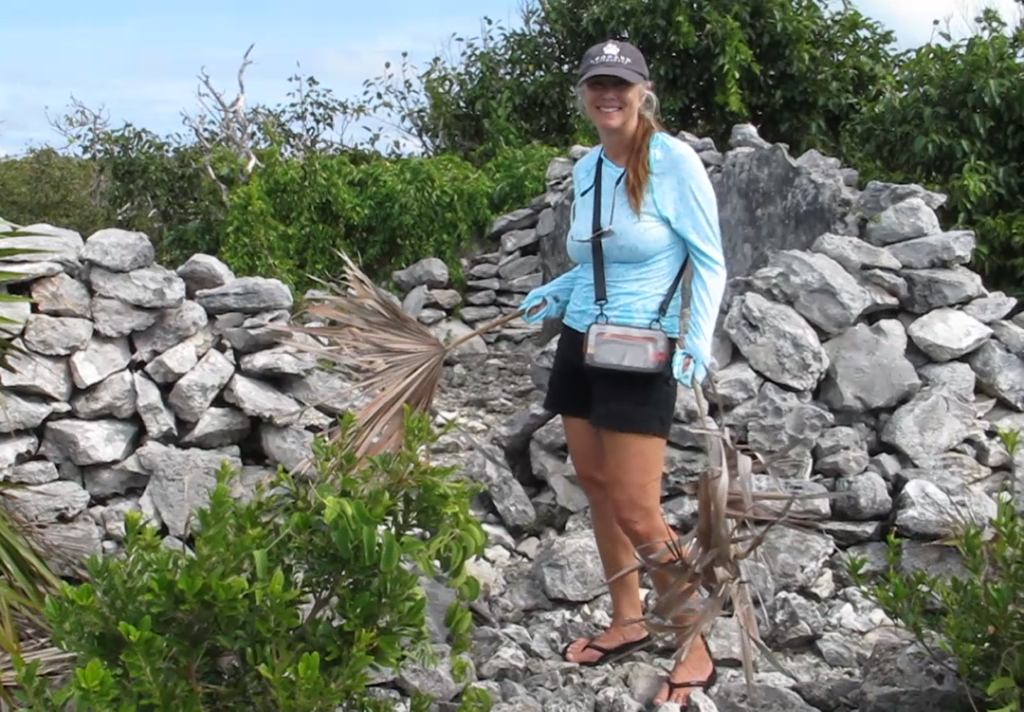
As good as the ruins were, the highlight of the whole adventure was watching Brenda desperately dodge the poisonwood trees. She clutched two palm fronds with her sleeves and held the poisonwood at bay as we walked the narrow path.
Boo Boo Hill
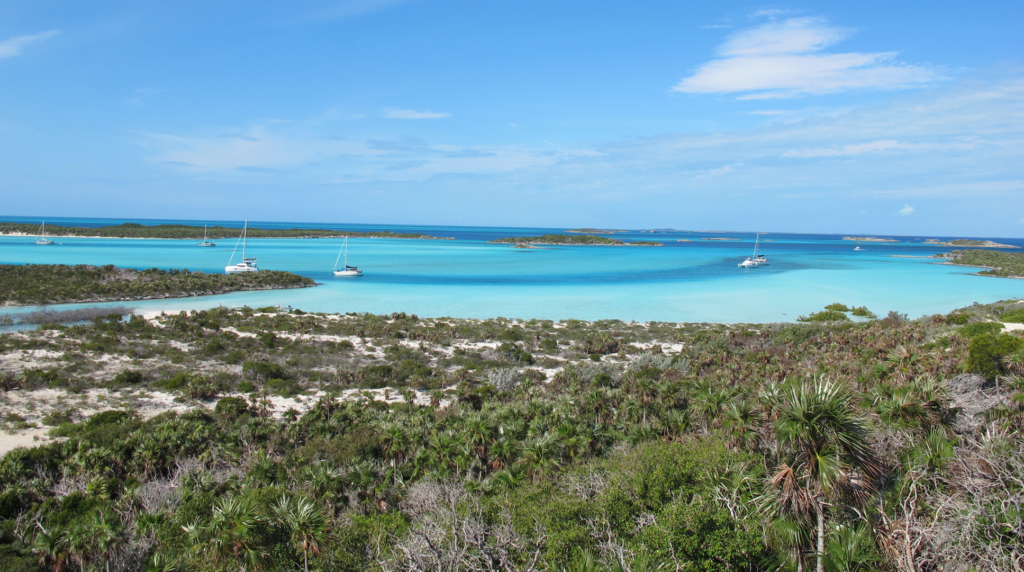
The highest point on Warderick Wells Cay, Boo Boo Hill, provides a panoramic view of the entire island, particularly the iconic north mooring field. But the legend behind the name isn’t about the view.
As the story goes, Boo Boo Hill is haunted by the souls of a ship that perished on the nearby reefs. Some accounts add that the bodies are buried beneath the hill. At night you can hear the spirits in the wind. It has become a tradition for visitors to leave a piece of driftwood imprinted with their ship’s name atop the hill as an offering to Neptune, the god of the sea, for safe passage.
Who are we to snub King Neptune?
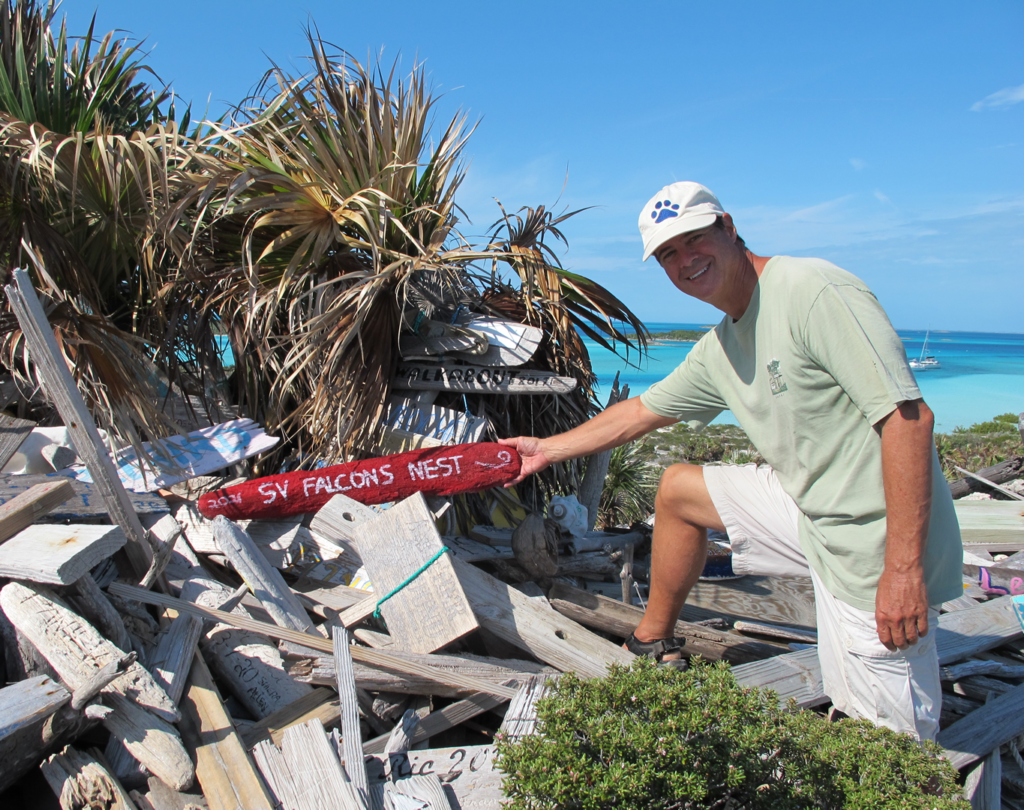
Pirate’s Lair Mooring
After a couple peaceful days at Emerald Rock mooring, it was time for another cold front and the associated wind shifts. We needed to shelter for a strong southerly and the small Pirate’s Lair mooring field on the south end of the island next to Hog Cay looked like the perfect fit. It wasn’t.
Pirate’s Lair has four mooring balls in a line along the cut between Warderick Wells and Hog Cay. It’s a beautiful lagoon-like setting next to a beach. When we arrived, the two moorings deepest in, #3 and #4, were occupied so we took #2. Shortly after, someone took #1. The other three boats were all monohulls.
This would be our biggest lesson on the interactions between wind and current, as well as the evil side of mooring balls. When the tidal current was aligned with the wind, all four boats went tight on their bridals and everything was fine. However, that all changed when the tide shifted. The three monohulls had the mooring ball resting against their bow. While that may have resulted in annoying banging, they were otherwise stable. Falcons Nest, however, went wild. It rotated a full 270 degrees every 15 minutes. The ball would get jammed on the outside port hull with the pennant under the hull pulled so tight you could hear the strain on our forward beam until the ball got pulled under water, popping up between the hulls. It would then go under the starboard hull, get jammed there, and the process would repeat for six awful hours until the tide turned. We were stuck, with no place to go.
After lots of research, we found that some catamaran owners tie directly to the ball instead of the long pennant and make the lines short enough to keep the ball in the middle and prevent it from reaching the hulls. I tried to get in close enough with the dinghy to attempt this, but the boat’s movement was so fast and violent that there was no way to get in there safely. This went on for two days as we hoped any damage would be minimal. Upon later inspection, we had lost some bottom paint and a few very small chips in the hull. A not-too-expensive valuable lesson.
